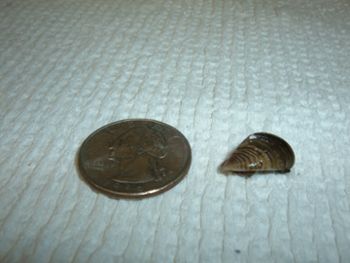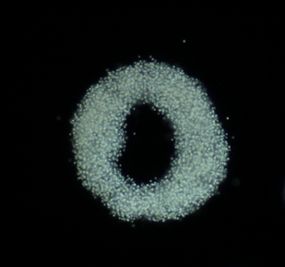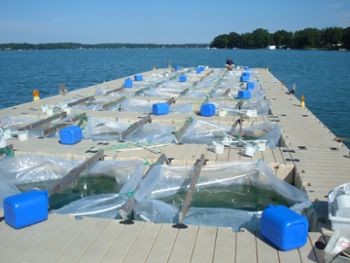Are zebra mussels eating or helping toxic algae?
While invasive zebra mussels consume small plant-like organisms called phytoplankton, Michigan State University researchers Stephen Hamilton and Orlando Sarnelle discovered during a long-term study that zebra mussels can actually increase Microcystis, a type of phytoplankton known as “blue-green algae” or cyanobacteria, that forms harmful floating blooms.
The study, titled Cascading effects: Insights from the U.S. Long Term Ecological Research Network, is one of five projects recently highlighted in a special feature in the Ecological Society of America’s journal, Ecosphere.
“Microcystis literally means small cell, but numerous cells cluster together in colonies that can float to the surface to form scums,” said Sarnelle, professor emeritus with the Department of Fisheries and Wildlife in the College of Agriculture and Natural Resources. “It is one of the most common causes of nuisance algal blooms in nutrient-enriched waters, including Lake Erie where it is a concern for municipal water supplies.”

In the 1990s, researchers observed the appearance of dime-sized zebra mussels in Gull Lake, Michigan. Shortly after the mussels arrived, the researchers noticed an increase in Microcystis, which was surprising because the lake has low levels of phosphorus and Microcystis has a well-documented need for high-nutrient waters.
“Lakes colonized by zebra mussels tend to have about three times more Microcystis,” said Hamilton, a professor in the Department of Integrative Biology in the College of Natural Science and a W.K. Kellogg Biological Station faculty member who was also curious to see if there was a relationship between the Microcystis and zebra mussels.

“We observed that zebra mussels can filter out the Microcystis with other particles,
but then they spit out the Microcystis because evidently it is unpalatable to them,”
Hamilton said.
Sarnelle collaborated with Hamilton on a multiyear study that was part of the National
Science Foundation's Long-Term Ecological Research Network (LTER). Forty years ago, the NSF recognized the need for research studies that lasted more
than a few years and launched the LTER Network.
“Long-term measurements are essential to our understanding of many ecological phenomena,” Sarnelle said. “There are many things you can’t answer in the typical two- to four-year grant cycle.”
The researchers suspected the zebra mussels were consuming competitors of Microcystis, which paved the way for the cyanobacteria to flourish under lower nutrient availability than it usually needs. In 2010, an unexpected summer die-off of zebra mussels in Gull Lake during prolonged warm temperatures provided a whole-lake test of the relationship, an opportunity that scientists sometimes call a “natural experiment.”

“Normally, Microcystis thrives in warmer water,” said Jeffrey White, who was a graduate
student advised by Sarnelle at the time and is now a faculty member at Framingham
State University in Framingham, Massachusetts. “Instead, we saw an 80 percent decrease
in the Gull Lake Microcystis population when the zebra mussels died despite optimal
temperatures for its growth.”
The researchers were able to use the long-term study data to confirm their hypothesis.
“This fortuitous observation following years of sampling strengthens the argument
that there is a cause-and-effect relationship, and not just a correlation, between
zebra mussels and increased Microcystis,” Hamilton said. “Multiyear studies can catch
slow, unusual or extreme events that could be making important changes resulting in
long-term lasting effects in the ecosystems."
Banner image: In the 1990s, researchers observed the appearance of dime-sized zebra
mussels in Gull Lake, Michigan. Shortly after the mussels arrived, the researchers
noticed an increase in Microcystis, which was surprising because the lake has low
levels of phosphorus and Microcystis has a well-documented need for high-nutrient
waters. Courtesy photo